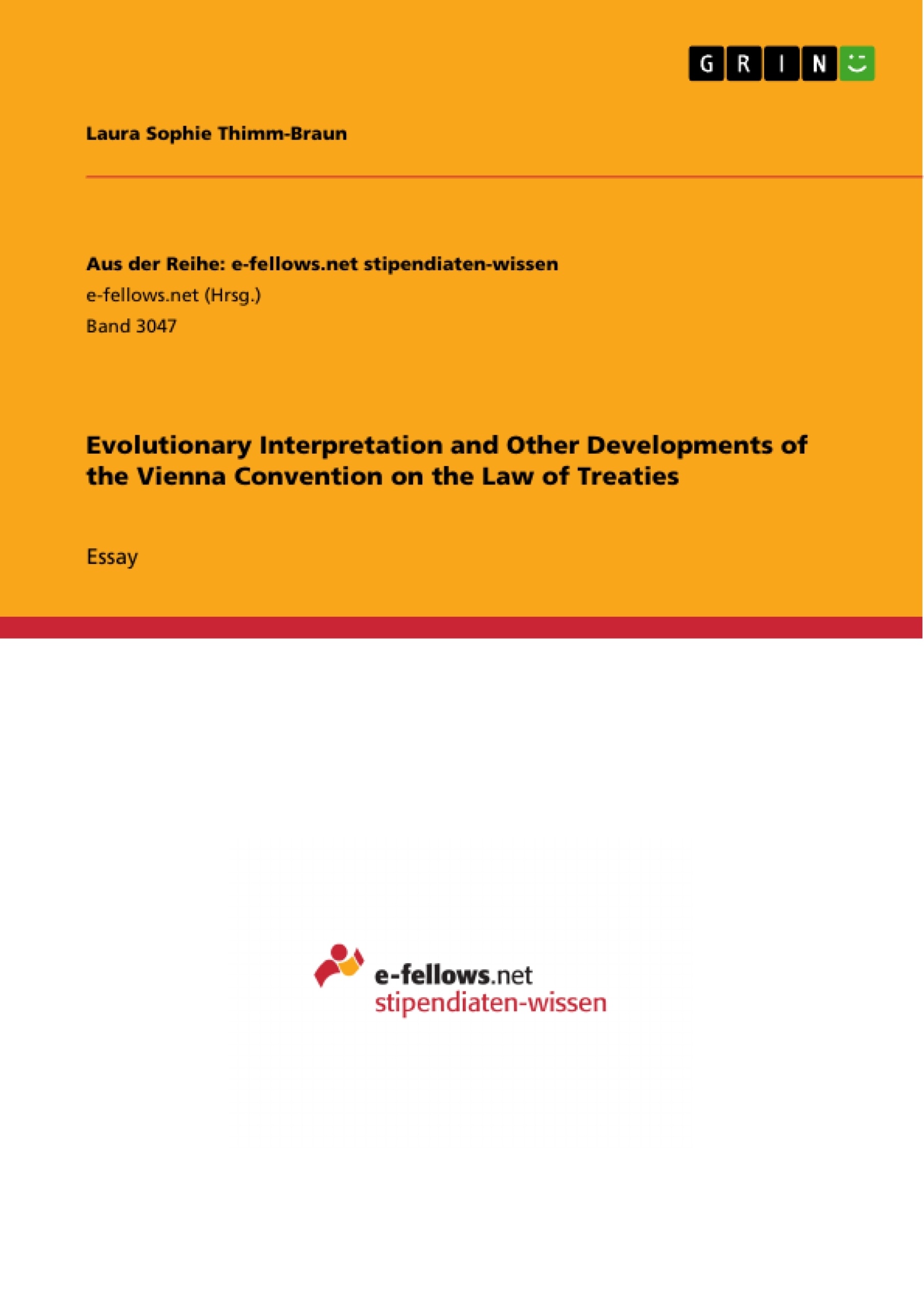This essay is concerned with the ramifications of the interpretation of the Vienna Convention on the Law of Treaties.
The Vienna Convention on the Law of Treaties, from now on referred to as VCLT, constitutes the "bible" of international practitioners. Like the United Nations Charter, the widespread clarity and intelligence of its drafting have enabled States to comply with the rules and adapt their practice without distorting or departing from the VCLT. The rules provide an important framework which is flexible enough for States to accommodate alternatives, variations and even developments in their state practice. The provisions of the VCLT leave the states room for individual concretisation.
Some commentators say the VCLT has had its day and is incapable of dealing with the challenges of the 21st century. However, the VCLT has proved itself to be a most adaptable tool, as it was able to deal with challenges of the past decades. In order to do so, the provisions of the VCLT were clarified, modified, developed, or amended.
This paper aims at discussing the development of several selected provisions of the VCLT as well as analysing the new types of interpretation, such as the evolutionary interpretation. The difference between the original provisions and the present state of the law will be outlined in this paper.
Inhaltsverzeichnis (Table of Contents)
- I. Introduction
- II. Development of the Vienna Convention on the Law of Treaties - Evolutionary Interpretation
- 1. What is Evolutionary Interpretation?
- 2. What Role Does the Evolutionary Interpretation Play within the VCLT?
- 3. Legal Basis for Evolutionary Development in Article 31 VCLT
- 4. Does One Size Fit All? - Different Areas of Treaty Law
- 5. Interim Conclusion
- III. Amendments, Modifications, Developments and Clarifications of other Provisions of the VCLT
- 1. Article 7 VCLT
- 2. Article 9 (2) VCLT
- 3. Article 11 VCLT
- 4. Article 18 VCLT
- 5. Articles 19-23 VCLT
- IV. Conclusion
Zielsetzung und Themenschwerpunkte (Objectives and Key Themes)
This paper examines the evolution of several provisions within the Vienna Convention on the Law of Treaties (VCLT), focusing on the development of evolutionary interpretation and the adaptation of other articles to accommodate the changing dynamics of international law.
- Evolutionary interpretation of treaties
- The role of subsequent practice in treaty interpretation
- Adaptability of the VCLT to changing circumstances
- Modifications to treaty interpretation in specific areas like human rights law
- The evolving role of state practice in treaty interpretation
Zusammenfassung der Kapitel (Chapter Summaries)
- I. Introduction: This chapter establishes the importance of the VCLT in international law and emphasizes its adaptability despite criticisms that it may be outdated. The paper's aim is to analyze the development of specific VCLT provisions, particularly focusing on the evolutionary interpretation approach.
- II. Development of the Vienna Convention on the Law of Treaties – Evolutionary Interpretation: This chapter delves into the concept of evolutionary interpretation, explaining its nature as a dynamic and purpose-oriented approach to treaty interpretation. The chapter explores its relationship with inter-temporal law, the principle of good faith, and its legal basis in Article 31 VCLT. It also examines the application of evolutionary interpretation in various areas of treaty law, including human rights and constituent treaties of international organizations.
- III. Amendments, Modifications, Developments and Clarifications of other Provisions of the VCLT: This chapter discusses how the VCLT has evolved beyond the interpretation of its provisions, highlighting the development of specific articles. It explores the adaptation of Article 7, which deals with state representation in treaty-making, and the implications of these developments on the VCLT's overall effectiveness in a changing world.
Schlüsselwörter (Keywords)
This paper focuses on the Vienna Convention on the Law of Treaties (VCLT), evolutionary interpretation, treaty development, subsequent practice, human rights law, constituent treaties, and the adaptation of legal provisions to evolving circumstances. It examines the interplay of these concepts to understand the VCLT's adaptability in a dynamic international legal landscape.
- Quote paper
- Laura Sophie Thimm-Braun (Author), 2019, Evolutionary Interpretation and Other Developments of the Vienna Convention on the Law of Treaties, Munich, GRIN Verlag, https://www.grin.com/document/463297



